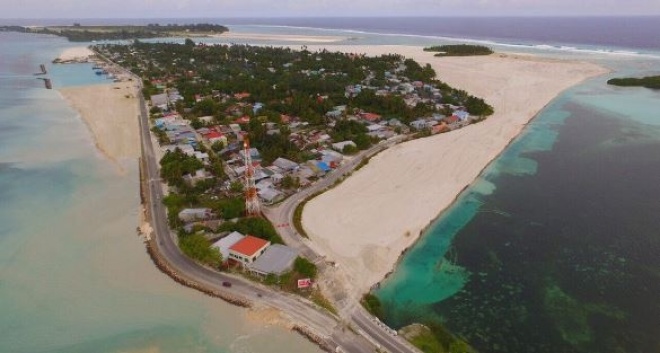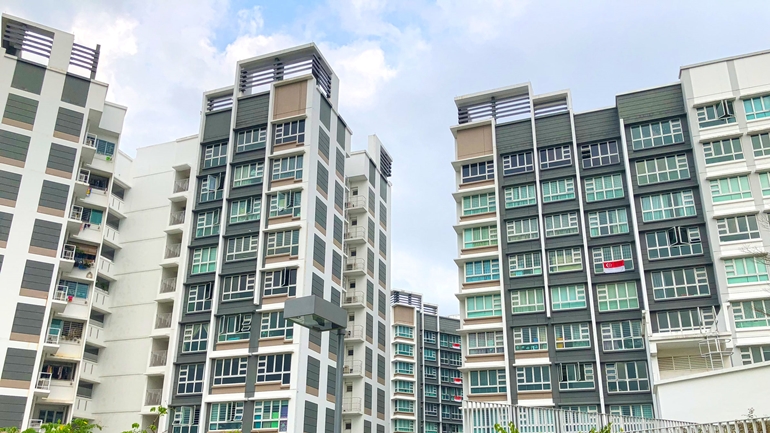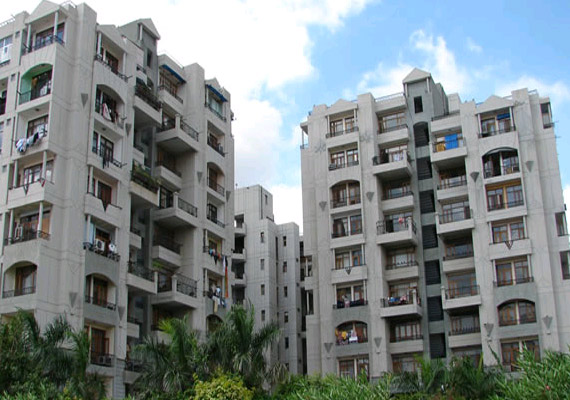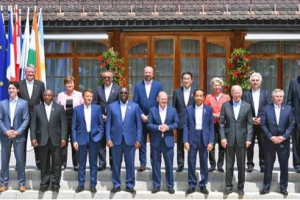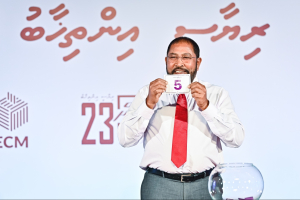Maldives is a small island nation that is geographically scattered in the wide Indian Ocean. The country consists of almost 99 percent of sea on its territory with just a small fraction of it being habitable land. Particularly, Maldives has a land area of 300 km2 stretched across the Indian Ocean for 115,300 km2. In addition to this, 859,000 km2 surrounding the country is allocated as the Exclusive Economic Zone (EEZ) of Maldives. While this is the case, out of the 1,192 islands, only 187 islands are inhabited in the 21 naturally formed atolls in the country.
As Maldives uses majority of its islands for resorts and commercial purposes, the 557,426 living population is concentrated on to these small and few inhabited islands in the country. Among these islands as well, the population density varies vastly.
One of the key issues the country has always faced over the years is proper allocation and distribution of land for housing. For a long period, the government has been giving out state land to citizens who meet a certain criteria.
While this has been going on for as long as we can remember, it is questionable whether this is the most efficient method to ensure that citizens have roofs over their heads. Over time, one thing that has been observed is that, it has become a means for the rich and the powerful to acquire more lands while the poor to just sit on the side lines watching. In other words, the system has facilitated in the rich getting richer, while the poor continue to be poor.
Most lands end up being idle
While a considerable amount of people get lucky enough to get their own lands through the government bodies, in most cases, their luck runs out as they cannot afford to build a home for themselves. Majority of these people either end up moving to the capital Male’ area, or leave their lands empty and abandoned until they gather up enough money to build a house.
With the current laws of Maldives, if these people get their lands registered under their names, then the lands that they abandoned cannot even be taken back by the government for it to be distributed to other needy people. This means that the already limited lands available in the islands will simply remain idle and untouchable until the owner decides to either use it or sell it.
These lands go years, or even decades, with no one to develop, no means to develop and most importantly, with nothing the local councils or the government can do about it. Most of the time, these lands, often with small houses – which are built for the purpose of registering the land/ house- end up becoming dens for illicit and illegal activities in the island. On top of this, these untouched lands eventually become the neighborhood dump sites, where mosquitos and other types of pests end up breeding.
What about the people who can afford to build homes?
Due to the lack of available land, the government only gives land to those who meet a certain criteria. These people are mostly the needy people with no land of their own. So, the people who can actually afford to build homes if they had a land, will not be able to do so as the island councils cannot give them lands.
In most cases, these people either end up buying the abandoned lands from their owners or somehow manage to get their own lands from the governments. This has also been a raising complaint among the citizens.
Giving out land to the powerful and rich so they can built their own houses, guesthouses or even shops while the poor remain without lands. Although, the rich buying lands from poor can provide them with money, the main issue of housing still remains unsolved in the end, as those who actually need a shelter end up having without one.
An effective solution
To overcome this issue, the government has reclaimed lagoons of some of the islands as a temporary measure. But, is this the real solution everyone wants? How much can we reclaim? How much land can we give? How many people can develop homes if they get a land? These are the questions that lawmakers need to ask themselves. Along with lawmakers, the citizens who are out raising their voices, asking the government for land must also take time and ask these questions to themselves. Is this an effective solution for we want?
While politicians happily say “yes” to satisfy their peoples demand, it is time for everyone to understand that not all can afford to build their dream homes or barely even a simple home. Sadly, we need to accept that most of our society does not earn enough to do so – a topic for anotherday.
Even with housing loans, people are barely able to complete their homes due to various reasons. Most of the time, their homes are only half built and the people end up paying majority of their income to the banks to repay for their housing loans.
The worldwide solution
This is why, the most simple yet functional solution for this issue is for the Maldivian government to adapt to how the world has been working throughout the years. Building housing facilities, regardless of flats or grounded houses and leasing them to the people for a long term after which they would be able to own the properties.
The world had learned this lesson a long time back, and it is now time for the island nation to learn it too. Rather than making potential lands idle, the world has formulated policies where the governments will be building various types of housing facilities with different pricing models.
This way, the citizens can avoid having to face issues of not being able to build their own home or about having to live in a place out of their preference. This method also helps by preventing people from being trapped in long term bank loans which puts a huge burden on the living population.
A proper housing plan and design
However, this all comes down to how properly and thoroughly our islands are being designed. While Addu City Council has been trying to make a land use plan for the past 10 to 12 years, nothing substantial has yet been formulated.
As this is the case with most of the islands in Maldives, the island councils need to hire parties with proper knowledge and technical experience to plan the islands properly which integrates the existing infrastructure with the future plans.
Island and city councils need to allocate where and which type of housing facilities they want their islands to have and which price scales they would use. This must also be a means to attract those people who had migrated from those islands back and also an invitation for more people to move to the islands and cities which would be a major factory in growing a healthy economy of that particular place.
Based on existing data and future projections, island councils and city councils must plan and develop such housing facilities and bring an end to giving out land to people. Through contractor financing and other such financing methodologies, councils can have these housing units developed and then leased to the public.
Along with leasing houses to the public, another method the government can use to sustain profit is by leasing the lands to people/ parties through auctions. The government can lease the land to the highest bidder and this will act as another source of income for the country.
This method also ensures that the successful bidder will complete the building at the earliest so they can gain their return on investments. This way, the limited lands in Maldives will not remain idle and will be used more efficiently.
While the people who are able to build their own homes on their lands take approximately five to ten years (or possibly more) to be able to move in, with such modern residential housing facilities, people will be able to completely move in within two to three years at most. With the current construction and development capacities of companies, this is not a far-fetched timeline.
Residential overwater bungalows
While the country is stressing on the limited amount of land it has, the Minister of National Planning, Housing and Infrastructure, Mohamed Aslam suggested a rather different solution to provide housing for residents.
Minister Aslam reminded us that Maldives is in fact, surrounded by 90% water. He said that people should not consider that the land, which is one meter above the sea level as the available land of the country and that they should consider the one meter of land below the sea level as well, hinting to the usage of the lagoons for living.
Yes, Minister Aslam is planning to build residential overwater bungalows in Maldives. He said that he has already made a model for the project in one of the inhabited island of the country and that the concept for this idea has been already developed.
He added that this was not a “total solution” as Maldives has limited land but this would help to achieve the “total solution” needed by the country. He also added that if people start to live like this, then the demand for reclamation would go down and that he’s sure that some people would prefer this way of living.
While Minister Aslam is determined to build residential living a possibility in the lagoons of the country, has he considered whether this type of living can be afforded by all the citizens in Maldives?
Although Minister Aslam said that the cost of this has not been determined yet, we can all predict that the cost of these bungalows will be far from affordable as creating bungalows it self is an expensive task. Therefore, creating bungalows over the seas will be much more expensive. So does this project only target the rich in the country or perhaps, Minister Aslam has a far better idea to provide these facilities in a way that all citizens can afford it?
Nevertheless, one of the best examples of housing projects that we get to see in the Maldives is one of the country’s biggest housing project, Hulhumale’. This is a reclaimed land that is located near the capital Male’ city.
Hulhumale’ has different levels of housing facilities that are being provided to people of different income levels. Most of the buildings are being developed through contractor-financing. As this model has successfully worked in one island, it shows that it is a functional option for the remaining islands in Maldives as well.








